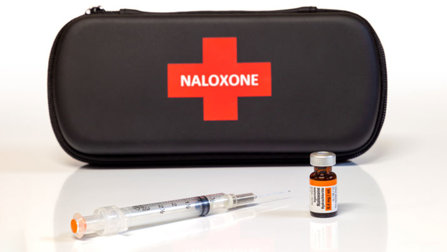Narcan: A Basic Guide

With the Opioid epidemic in full swing, advances in medicine can help you save a life.
Narcan is a medication that can reverse the effects of an opiate overdose. It is what’s known as an opiate antagonist. It literally flushes opiate agonist drugs such as heroin, fentanyl, etc. out of the receptors in the brain. Simply, opiate agonists are opiate drugs that Increase activity of a receptor. Antagonist drugs, like Narcan (aka. Naloxone) diminish activity of opiate receptors.
As you can see, this is a potentially lifesaving drug. EMT’s and first responders carry it with them and hospitals use it daily to combat the opioid epidemic. It is now available over the counter (without a prescription) at Walgreens pharmacies in 46 states. The states in which you still need a prescription are Delaware, Hawaii, Maine, Michigan, Nebraska, Oklahoma, and Wyoming.
It is currently available in two forms: injectable intramuscular shots and a nasal spray. The intramuscular shot is given in the muscle of either the thigh, arm, or buttocks. Narcan usually works within 5 minutes. It has a duration of approximately 90 minutes. While it may take more than one dose of Narcan to adequately reverse the effects of overdose, particularly if the person has taken a large amount of opiates, once reversed the duration of the medication usually makes it unnecessary to give again.
Using Narcan does not mean the person is totally fine. Call 911 immediately even if you have Narcan or have already administered it. Overdose can have complications and secondary dangers such as pneumonia or nerve and brain damage. Over 40 states now have laws that prevent criminal charges from being filed against overdose patients and those who call for help on their behalf.
While it is important to know the signs of opiate overdose, do not waste time. Narcan has no effect on a person who has not used opiates, so it’s very safe and is often used to diagnose opiate overdose. In other words, it’s often given when overdose is suspected but not known, as it can rule this out. If it doesn’t work, it’s not opiates but there’s no harm.
There are, of course, possible side effects or the person could be allergic to the drug. You probably wouldn’t know this before administering it, and the person wouldn’t be responsive enough to warn you, so the safest bet is to give it if someone’s overdosing. The benefit outweighs the risk in a life or death scenario.
Signs of overdose include slow/labored breathing or no breathing, unconsciousness and unresponsiveness (will not wake), pinpoint pupils, bluing of the lips, skin or extremities and slow heart rate. These effects should begin to reverse within a few minutes, and if not, a second dose can be given. Upon reversal, if the person is an opiate addict they may be thrown into withdrawal symptoms. Don’t be alarmed by this, as they’re lucky to be alive. Do not leave the person unattended. Stay with them until paramedics arrive.
With very basic training, anyone can use this lifesaving drug to prevent another death from opiates. Whether it’s a loved one, a friend or a stranger, more and more people are carrying Narcan for this purpose. You don’t need to be a medical professional to safely use it. The training shown here is all you need.
Link for training: http://stopoverdoseil.org/resources.html
Sources:
- http://stopoverdoseil.org/narcan.html
- https://vitals.lifehacker.com/narcan-is-now-available-over-the-counter-in-45-states-1819896107
- https://www.drugs.com/mtm/narcan-nasal.html
Written by Doctor Rohit Adi

When he’s not traveling the world, Rohit can be found at his home base in Baton Rouge, shopping at the farmer’s market or jogging the path surrounding his newly acquired farm. A native of India, he has lived in Chicago, Illinois and Pennsylvania before calling the Deep South his home. His passions are his family, organic gardening and helping others as a Medical Doctor and Addictionologist.